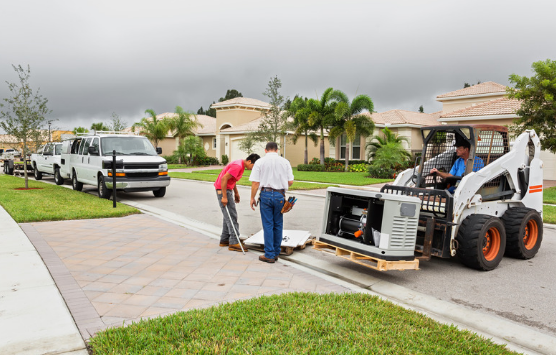Generator installation can be overwhelming to the DIYer. In this guide, we hope to give you the knowledge to help you tackle your first generator installation with ease. Our best mode of defense against emergencies would be to prepare as best we can. Having a standby generator is one of the ways you can combat the uncertainty of grid failure.
Generator Installation, What You Need to Know
If you’re reading this, you probably went online to look up “generator installation near me.” We’ve compiled this guide as a comprehensive checklist for beginners looking to install standby generators.
Checklist for Generator Installation
Here is a checklist every beginner should use as a guide when installing generators:
-
Budgeting
When you budget for a generator installation, you shouldn’t only consider the initial cost. There will be other additional expenses that will hike the price, and if your budget cannot cover them, you’ll run into a shortage. Take your time and research various generator models and associated accessories. You should also factor in the long-term costs of ownership. There will be fuel to buy, maintenance to cover, and probably other unexpected expenses that come with owning a generator.
If you expand your options, you should be able to find the perfect one that offers you a good blend of affordability and the ability to meet your power needs.
-
Choosing the Right Generator
Before you make your choice, make sure to assess your power requirements. You don’t want to end up with a generator installation that can’t cover your needs. Pay attention to both the starting and running wattage of your equipment.
The generator you eventually buy should be one that optimally suits your needs. If possible, read user reviews, ask for recommendations, and even compare the features of your options before you make a final choice.
-
Right Site Selection
The location of your generator installation is a determining factor in its safety and performance. You should only set it up in a location with ample ventilation. Ideally, it should be situated outdoors and away from doors and windows so that the residents can be free from the noise and the toxic fumes that emanate from the exhaust.
Also, ensure that it doesn’t face any risk of tipping or vibration. Most people buy a concrete pad for their generator installation to help the generator stay above the bare ground.
-
Code Compliance
There are specific regional and local building codes and zoning regulations that control a generator installation. In some states, you would have to obtain permits and adhere to strict noise compliance rules and safety guidelines concerning emissions.
If you fail to meet these standards for your generator installation, you’ll face the risk of fines, legal issues, or even the need to remove and reinstall the generator.
-
To DIY or not to DIY
Before you make the final decision to do any generator installation yourself, consider the complexity of the procedure. While some portable generators may be suitable for DIY installation, standby generators or those requiring electrical connections typically demand professional expertise.
Weigh the risks involved before doing a generator installation on your own. Check if you have the necessary safety materials, and be 100% sure that you have the right expertise for the process. Going ahead with a generator installation when you’re not the right person for the job can set you up for safety hazards and potential damage to the generator or your home’s electrical system.
-
Routine Maintenance and Management
The last phase of the generator installation process is a continuous one. You have to establish a routine maintenance schedule that ensures the optimal performance of your generator in the long run. Regularly check oil levels, fuel stability, and air filters. Test the generator periodically, especially before critical weather events.
If you are dedicated to these maintenance routines, you’ll benefit from the generator’s reliability during power outages, its extended lifespan, and the minimal need for repair expenses.
Wrapping Up
If you do the generator installation right, everything will work just fine. There would be no risk of fire, electricity, or liability if someone gets hurt. Do not attempt a DIY generator installation if you do not have the expertise and confidence to execute it in a manner that meets all standards.
Other posts you might enjoy:
Why Having A Backup Generator Is Important






